How to Get More Hydrangea Flowers in Your Garden
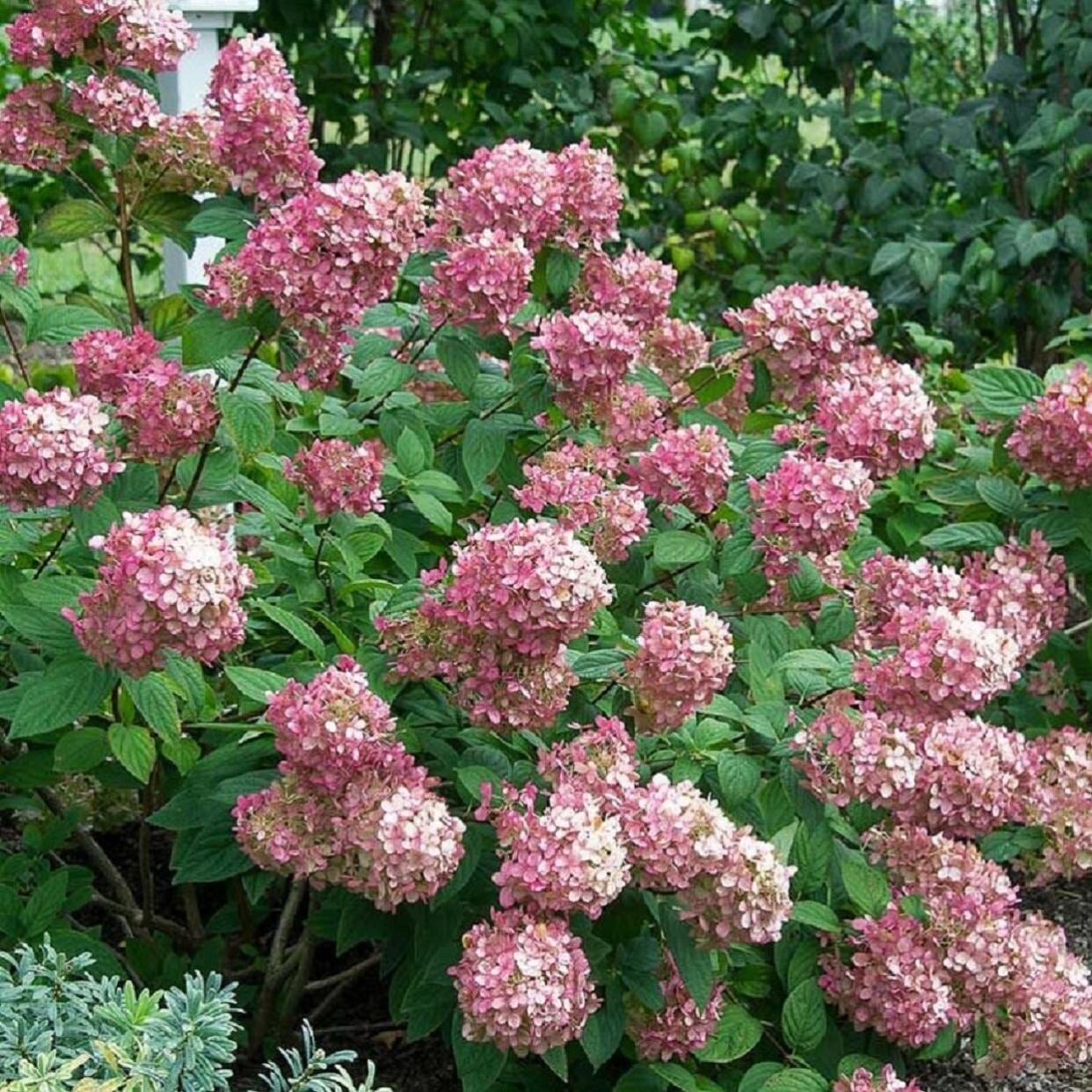
Hydrangeas' big, beautiful flower heads effortlessly attract attention. As a focal point in the garden, in a vase, and in wedding bouquets, hydrangeas are some of the showiest blooms out there. Plus, the shrubs are fairly easy to grow and are hardy across most of the country. To get the most flowers from your hydrangeas, make sure your plants get the right amounts of water and fertilizer. The key is knowing the type of hydrangeas you're growing. The three most popular hydrangea varieties are panicle, smooth, and bigleaf. Each type has slightly different care requirements, so with a little know-how and planning, you'll be able to properly prepare your specific hydrangea variety for optimal blooms.

White Flower Farm
How Often to Water Hydrangeas
All hydrangeas love water. Their name comes from the Greek "hydra" meaning "water" and "angeon" meaning "vessel." But how much water do hydrangeas need? You'll know the answer once you look at the leaves. Hydrangea leaves droop when the plant is too dry, telling you they need water. The leaves also go limp in midday heat, so wait until evening to see whether they recover before you water them. When planting your hydrangea in the ground, it's best to water the plant at least three times a week to establish a strong root system. Be sure to keep the soil moist, but not soggy.
How to Fertilize Hydrangeas
Fertilizing hydrangeas can be a tricky task. Most hydrangeas don't need much, but woody plant guru Michael Dirr, a retired University of Georgia horticulture professor, says the best fertilizer for hydrangeas is an all purpose plant food applied in late winter or early spring. Be careful when applying hydrangea fertilizer: If you give your plants too much, you might get more leaves than blooms. Too much nitrogen also produces long stems that might not set flower buds.
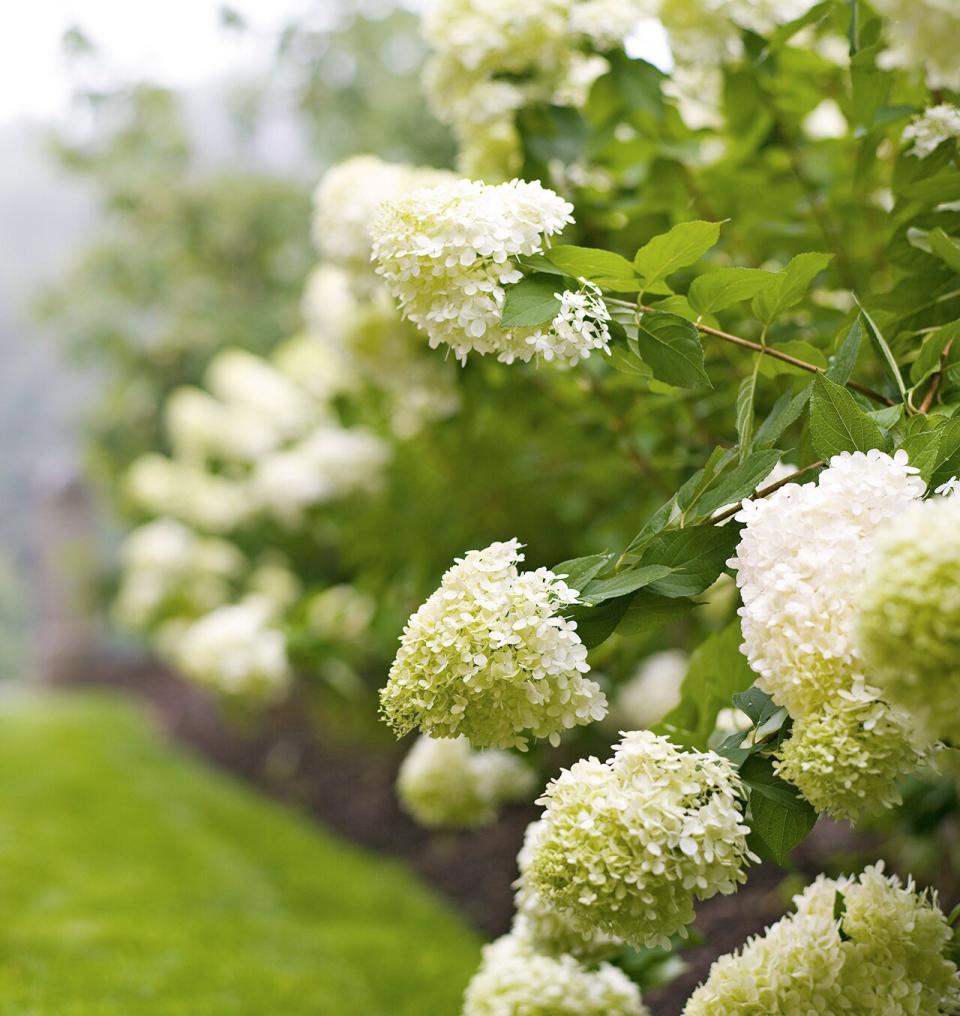
Bob Stefko
Panicle Hydrangea
Producing huge, cone-shape flower clusters, panicle hydrangeas (Hydrangea paniculata) generally have white blooms but the flowers of several varieties will blush to pink as they age. Some of the most popular varieties of this type of hydrangea include Limelight (flowers have a greenish tinge) and Vanilla Strawberry (beloved for its pink and white two-tone flowers).
Blooms will begin appearing in July, continuing into the fall. The plants do best in full sun and well-drained soil, and are hardy in Zones 3-8. If you're wanting a big hydrangea, a panicle hydrangea might be for you. They can grow up to 10 feet tall, but there are plenty of newer varieties that stay more compact.
How to Get More Panicle Hydrangea Flowers:
Plant panicle hydrangeas in all-day sun or afternoon sun.
Water them during a drought, especially if you notice wilting.
Add plenty of organic matter (such as compost) around the plant.
Limit any drastic pruning to early spring, just before new growth emerges.
Deadhead blooms as they fade.
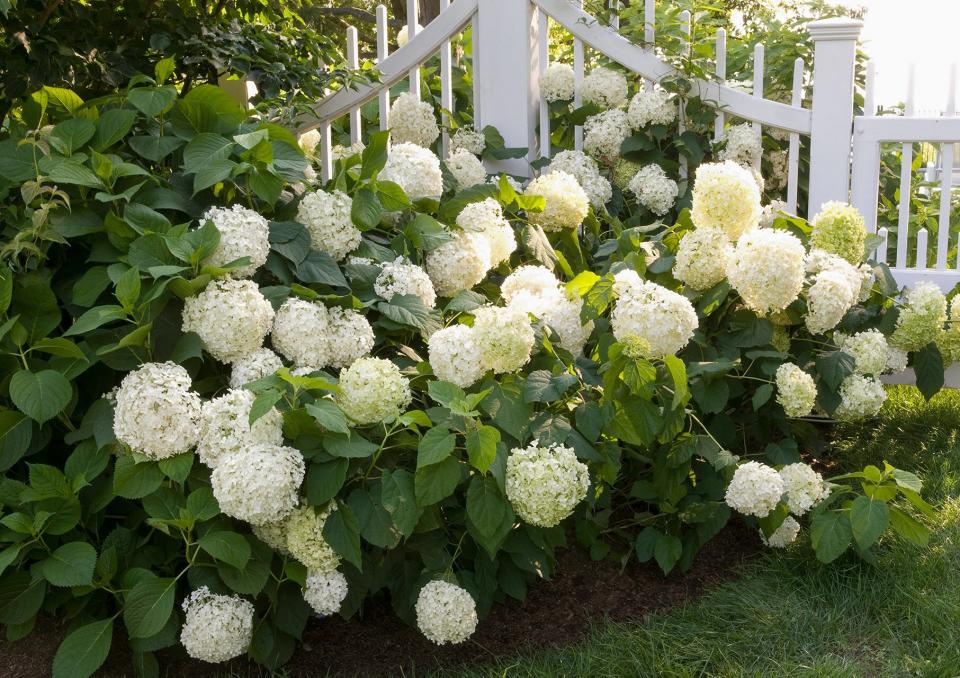
Matthew Benson
Smooth Hydrangea
Named for the texture of their large leaves, smooth hydrangeas (Hydrangea arborescens) are better known for their enormous, spherical, white flower heads. The best known variety, 'Annabelle' (sometimes called Snowball Bush), was discovered by a horticulture professor in the 1960s and traced to Anna, Illinois. 'Annabelle' hydrangea shows off big blooms that initially are pure white but then gradually fade to green. Invincibelle Spirit is a newer variety that blooms pink instead of the typical white. Native to areas of North America, smooth hydrangea begins blooming in late June and continues to bloom intermittently throughout the summer. It grows in sunny or partly shady conditions in Zones 4-9.
How to Get More Smooth Hydrangea Flowers:
Plant smooth hydrangeas in full sun if the soil stays moist. (Partial shade is better in spots that dry out from time to time.)
Water them during times of drought, especially during the heat of summer.
Amend the soil with organic matter (such as compost).
Prune stems back in early spring, just before new growth emerges.
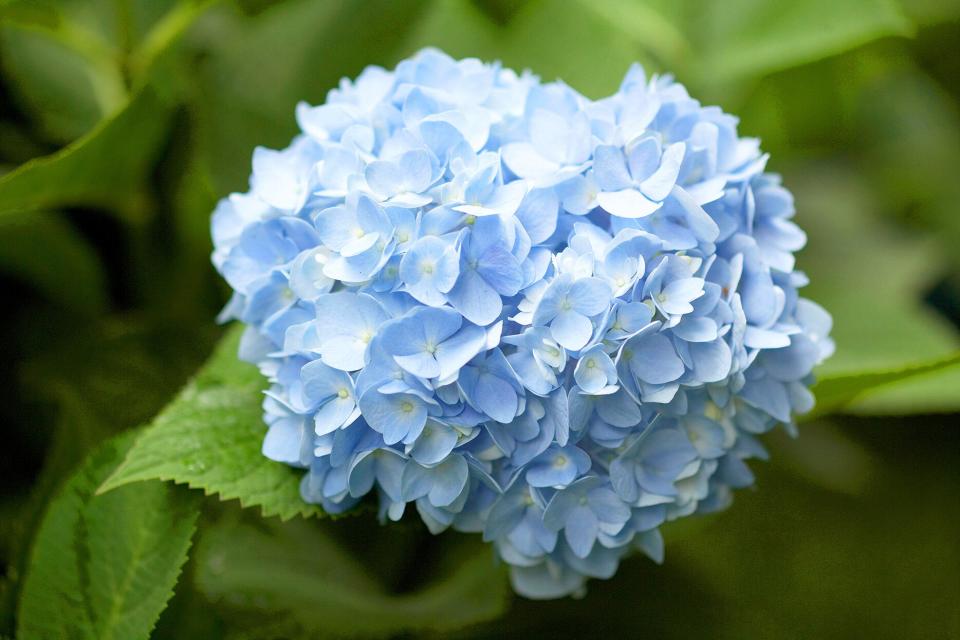
King Au
Bigleaf Hydrangea
The bigleaf group of hydrangeas (Hydrangea macrophylla) and its cousins, the oakleaf hydrangea (H. quercifolia), climbing hydrangea (H. anomala ssp. petiolaris), and serrate hydrangea (H. serrata), can present the biggest challenge when it comes to getting more flowers. These hydrangeas all primarily bloom on the previous year's stems (sometimes referred to as "last year's wood"). If you prune the stems one year, you are likely cutting off the next year's flowers. It's fine to remove any dead stems in spring. If you want to prune for shape, do it no later than early August, because the following year's flower buds are set when temperatures start to drop.
Related: 6 Tips for Growing the Most Beautiful Blue Hydrangea Blooms
In cool-summer climates with abundant summer moisture, bigleaf hydrangeas can be grown in full sun. Where summers are hotter or dry, though, these hydrangeas appreciate morning sun and afternoon shade. Growing these in too much shade will result in fewer blooms or none at all.
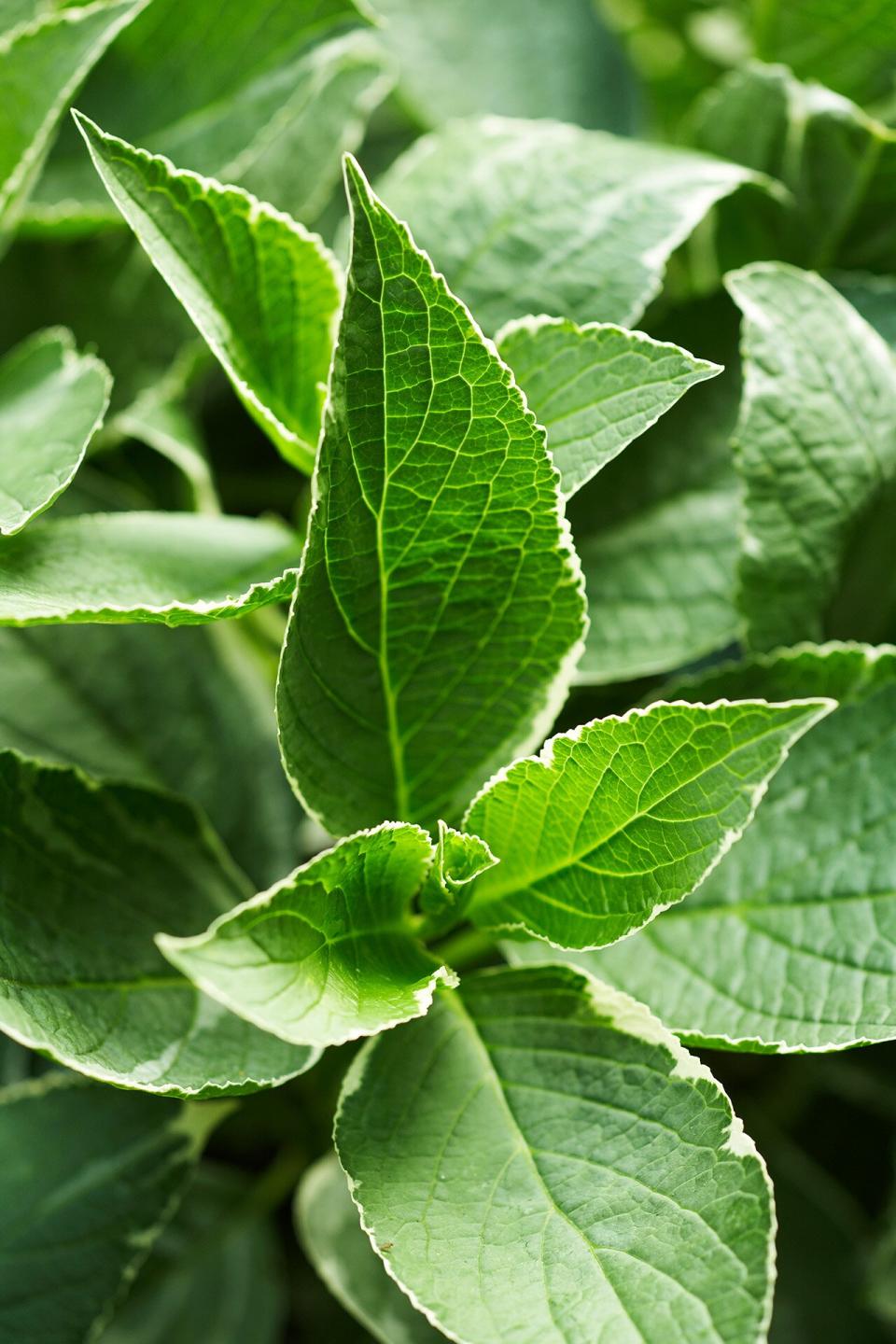
Studio Au King
Bigleaf hydrangeas can be especially touchy when grown in Northern states. Although some varieties are hardy in Zones 4 or 5, many are only reliable in Zones 6-9. In cold regions, flowering can be affected by early-fall frost, late-spring frost, or super-cold winter temperatures. If you wish, you can cover bigleaf hydrangeas with 12-18 inches of mulch after the first frost, removing the mulch as soon as the threat of frost passes in spring.
Consider growing one of the many new hydrangeas that bloom on old and new wood. They're often called rebloomers, but they're technically remontant, meaning they flower more than once in a season. Or enjoy bigleaf hydrangeas only for their leaf colors; some varieties sport green-and-white variegated leaves or lemon-lime hues. These plants' coarse leaves add texture and fantastic fall color to the garden. Common varieties with variegated foliage include Guilded Gold, 'Lemon Wave', and Light-O-Day.
How to Get More Bigleaf Hydrangea Flowers:
Plant bigleaf hydrangeas in half-day sun in average soil; full sun in areas with cool summers and consistently moist soil.
Water them well in spring and early summer; it's okay to let them be a bit drier from late summer to early autumn.
Amend the soil with organic matter (such as compost) on a yearly basis.
Don't prune unless necessary (except to cut out dead/diseased branches). Limit pruning of varieties that bloom on only old wood to late June and early August.
Give the stems extra winter protection in winter by wrapping them in burlap and insulating with shredded leaves.
Keep good air space between the plants; don't crowd them together or against other plants.
Don't give bigleaf hydrangeas too much love; if they're too comfortable (water, fertilizer, etc.), they may devote all their foliage to leaves instead of blooms.

